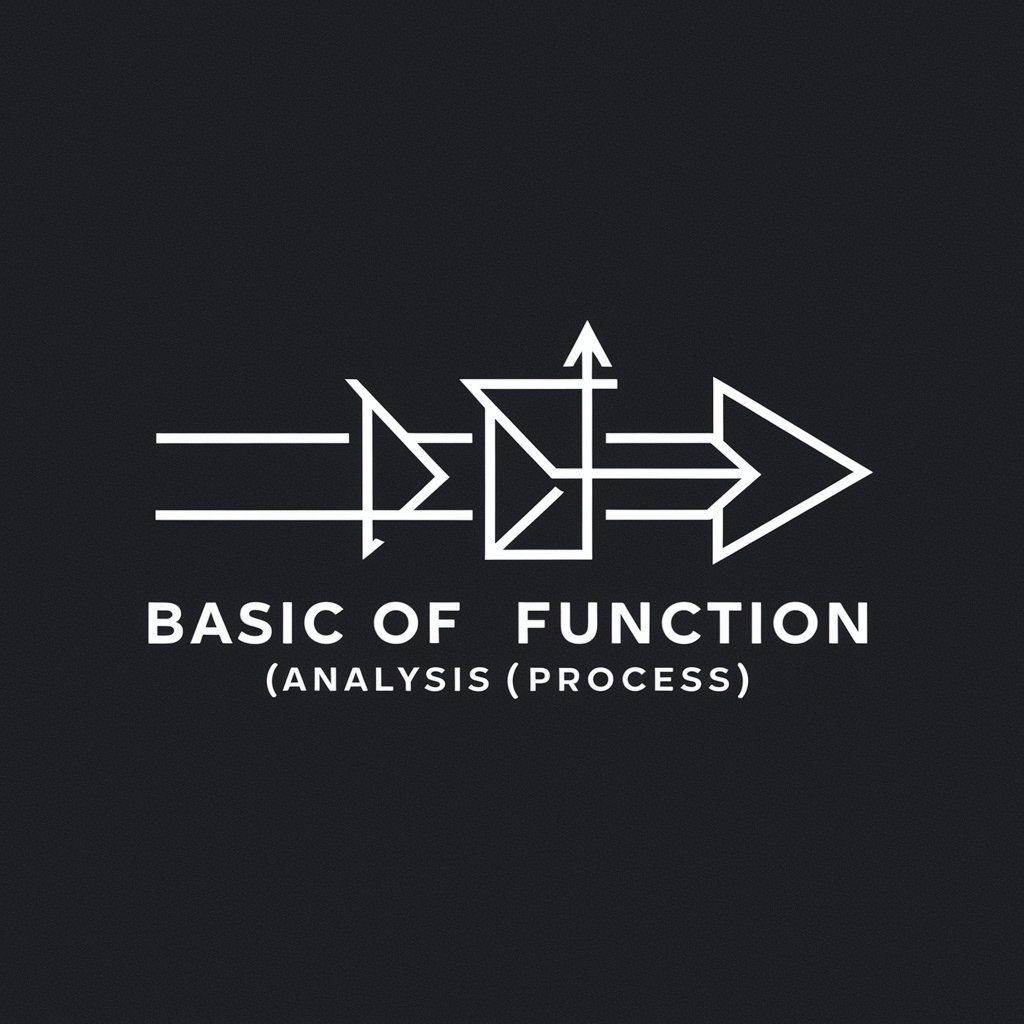Basic of Function Analysis (Process) - Process Analysis Tool

Welcome! Let's analyze and optimize processes together.
Dissecting Complexity with AI
Analyze the main process of...
Break down the sub-processes involved in...
Detail the function of each step in...
Structure the process of...
Get Embed Code
Introduction to Basic of Function Analysis (Process)
The Basic of Function Analysis (Process) is a specialized system designed to deconstruct and analyze processes by breaking them down into their fundamental sub-processes and examining the specific functions of each. This analytical approach helps in understanding complex processes by identifying, categorizing, and detailing the roles of each component within the overall system. For example, in the context of manufacturing, it might dissect the process of creating a product into stages such as procurement of materials, production, quality control, and distribution, analyzing the function of each stage in contributing to the efficient creation and delivery of the product. Powered by ChatGPT-4o。

Main Functions of Basic of Function Analysis (Process)
Process Decomposition
Example
Breaking down the software development lifecycle into phases like planning, analysis, design, implementation, testing, and maintenance.
Scenario
In a software development company, this function aids in identifying bottlenecks, improving efficiency, and ensuring each phase contributes optimally to the development of robust software.
Function Identification
Example
Identifying the role of temperature control in chemical manufacturing processes.
Scenario
For a chemical manufacturing plant, understanding the function of temperature control can lead to optimized reaction conditions, improved product quality, and enhanced safety measures.
Process Optimization
Example
Analyzing the supply chain process for an e-commerce business to identify inefficiencies in logistics and delivery.
Scenario
This function can help an e-commerce business streamline its supply chain, reducing costs and delivery times, thereby improving customer satisfaction and operational efficiency.
Ideal Users of Basic of Function Analysis (Process) Services
Process Engineers
Professionals who are tasked with designing, implementing, and refining manufacturing processes. They would benefit from using the services to optimize production lines, improve efficiency, and reduce waste.
Business Analysts
Individuals responsible for analyzing business processes within organizations to identify areas for improvement. They can use the service to model processes, understand their functions, and recommend enhancements to increase productivity and reduce costs.
Product Managers
Managers overseeing the development and delivery of products. They would find the service useful for breaking down the product development process, ensuring each stage is effectively contributing to the overall goal of timely, under-budget, and quality product releases.

How to Use Basic of Function Analysis (Process)
1
Start with a visit to yeschat.ai for an introductory experience without the need for signing up or subscribing to ChatGPT Plus.
2
Identify the main process you want to analyze. This could be any complex operation or procedure you're involved with or interested in understanding better.
3
Break down the main process into sub-processes. List each sub-process along with its specific function, aiming to understand how it contributes to the overall process.
4
Use the tool to input each sub-process and its corresponding function. This will help in structuring your analysis and providing a clear overview of the process.
5
Review the comprehensive function analysis provided by the tool. Use the insights to improve, optimize, or simply better understand the process in question.
Try other advanced and practical GPTs
Contradiction Identifier V1.0
Uncover Contradictions, Unlock Innovation

RunTours
Tailor Your Run, Discover Your Adventure

Qlaus 0.1
Unlock Expert Answers with AI

ダミデ郎
Simplify your CSV data preparation with AI

HVAC Image Generator Tool
Visualize HVAC Systems with AI

HVAC Image Creator Tool
Bringing HVAC Designs to Life with AI

Tequila4Beginners
Discover and Savor Tequila, AI-Enhanced

IELTS Writing
Enhance your IELTS writing with AI

Gabe's Price Localization
Maximize Revenue with AI-Powered Price Localization

Limerick GPT
Crafting whimsy with AI-powered verse

Purr-fect Jokes
Pawsitively hilarious cat jokes, AI-powered!

Keto Coach
Empowering Your Keto Journey with AI

FAQs on Basic of Function Analysis (Process)
What is Basic of Function Analysis (Process)?
It's a specialized tool designed to break down and analyze complex processes into their component sub-processes, each with a defined function, helping users to understand and optimize operations.
Who can benefit from using this tool?
Project managers, process engineers, researchers, and anyone involved in process optimization or seeking to understand the intricacies of complex operations can benefit from this tool.
Can this tool help in process optimization?
Yes, by providing a detailed breakdown of a process into sub-processes and their functions, it enables users to identify areas of inefficiency or redundancy, thus facilitating process improvement and optimization.
Is technical knowledge required to use this tool?
No specific technical knowledge is required. The tool is designed to be intuitive, guiding users through the process of breaking down and analyzing their processes.
How does this tool differ from other analytical tools?
This tool specifically focuses on the functional analysis of processes, making it particularly useful for those looking to dissect and understand the operational aspects of complex processes, unlike general analytical tools that may not offer this level of granularity.
